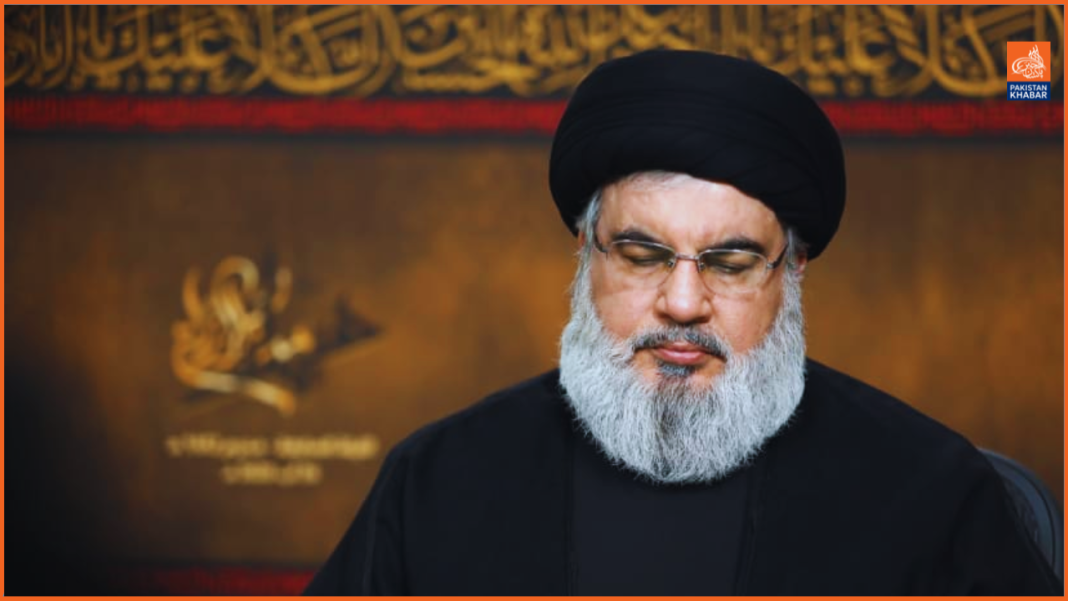Israel has long adhered to the formidable doctrines of its past leaders, like its legendary general Moshe Dayan, who advocated for Israel to be seen as a “mad dog; too dangerous to bother.”
By Iftikhar Gilani
Israel has long adhered to the ominous doctrines of its past leaders, such as former Prime Minister Ariel Sharon and the legendary general Moshe Dayan.
Sharon famously contended that creating fear was Israel’s primary weapon and deterrent to survive in the hostile region. Dayan advocated for Israel to be perceived as a “mad dog; too dangerous to bother.”
These philosophies have underscored Israel’s approach to its regional presence and conflicts, particularly in its recent relentless dealings with Palestinians in Gaza and Hezbollah, the Shiite militant group in Lebanon.
Late on the night of Friday, September 27, the skies over Beirut’s southern suburbs were illuminated not by stars, but by the fire and fury of Israeli bombs. Reports flooded in from Tel Aviv about a significant figure being targeted in a relentless bombing campaign.
Israeli jets, in a precise and overwhelming display of military might, dropped 85 bombs, each weighing between 900 and 1800 kg, demolishing six buildings in a densely populated area. By Saturday morning, the Israeli army had announced the death of Hezbollah’s chief, Hassan Nasrallah—a claim initially met with scepticism due to past false declarations of his demise.
The history of such claims dates back to 2006 when Israel had similarly proclaimed Nasrallah dead, only for him to resurface three days later on television, dismissing the claims. This pattern led to caution among news agencies this time, awaiting confirmation from Hezbollah itself.
Amidst destroyed communication links following the strikes, a statement eventually emerged from Hezbollah, not conceding defeat but confirming Nasrallah’s martyrdom and reinforcing their commitment to the path of Islamic resistance.
The statement, delivered with defiant poise, declared, “We have completed this path, even if we all become martyrs, even if our homes and our heads are destroyed, we will not deviate from the path of Islamic resistance. Martyr Quaid Hujtaul Islam Syed Hasan Nasrallah.”
This assertion of continued resistance despite the significant loss was a clear signal that Hezbollah was far from crippled.
The repercussions of Nasrallah’s death are profound, not just for Hezbollah but for the wider Middle East. Nasrallah, born in the 1960s in the working-class district of Borj Hammoud, was not merely a leader but a symbol of resistance against Israeli hegemony.
His tenure as leader since 1992 saw Hezbollah transform from a nascent militant group to a significant political and military force within Lebanon and beyond. Under his leadership, Hezbollah played a pivotal role in ending Israel’s 18-year occupation of southern Lebanon in 2000 and stood resilient during the 34-day war with Israel in 2006.
Observers note that Nasrallah’s strategic acumen was respected and feared despite his involvement in contentious actions, like the direct intervention in the Syrian civil war. His death claimed amidst a backdrop of relentless Israeli strikes aimed at crippling Hezbollah’s communication and command structures, marks a critical juncture for the organization.
Residents of Beirut’s southern suburbs, like Hammoud Abeer, a 45-year-old local, described the bombings as cataclysmic.
“The intensity of the bombardment was so great that I felt as if the building was going to fall on top of me,” Abeer recounted.
Witnesses like Al-Jawad reported that the explosions felt like severe earthquakes, creating a visceral fear among the populace, who feared they were being targeted to achieve an important strategic objective.
Experts believe that this is not just about a leader lost but about the resilience and the doctrine of an organization that, despite heavy blows, remains unbroken. Hezbollah’s structure is decentralized; it does not rely solely on the presence of a single leader, which allows it to maintain continuity even amidst turmoil.
The potential successors, like Hashim Safiuddin, Nasrallah’s cousin and a seasoned operative, are already in line, embodying the continuity and resilience of Hezbollah’s command.
Despite the personal and operational loss, the spirit of resistance that Nasrallah epitomized persists. Analysts like Sanam Vakil of Chatham House emphasize that Hezbollah’s ability to quickly regroup and reorganize underscores its enduring capability to confront Israeli advances.
Mohanad Hage Ali from the Carnegie Middle East Centre concurs, suggesting that while the leadership vacuum is palpable, the organization’s ideological and military foundations remain robust, capable of reorganizing to face further challenges.
In Beirut and Gaza, the ordinary lives disrupted by the conflict bear the brunt of these geopolitical manoeuvres. Homes turned to rubble, families displaced, and the constant threat of further escalation hung heavy over the region.
For many, the death of Nasrallah is not just a news item but a pivotal event that could reshape the landscape of conflict in the region.
Israel, under Prime Minister Benjamin Netanyahu, views this as a significant victory, potentially bolstering his position during a tumultuous period. However, the broader implications of this strike—and Nasrallah’s assassination specifically—echo through the corridors of power and the shattered streets of Beirut alike.
As Hezbollah vows to continue the legacy of Nasrallah, the Middle East watches and waits, aware that the conflict is far from over. The narrative of resistance, martyrdom, and strategic defiance continues to define the tumultuous relationship between Israel and Hezbollah, with each act of aggression and each response weaving into the complex tapestry of regional politics.
In this ongoing saga, the echoes of Nasrallah’s leadership will undoubtedly resonate, influencing both the immediate responses and the long-term strategies of those involved in this enduring conflict.
,
#####




